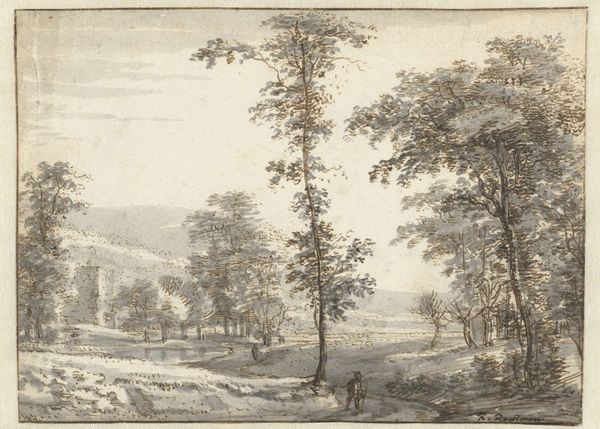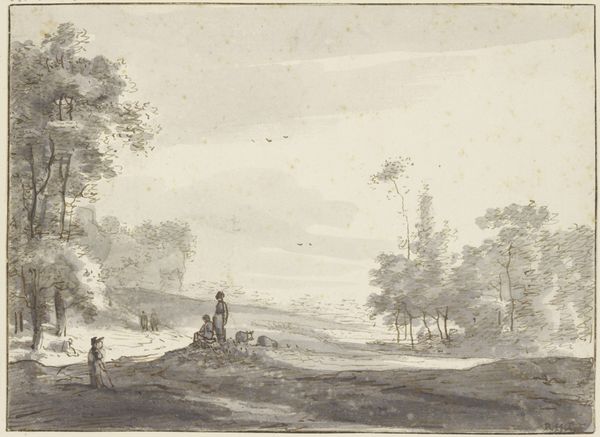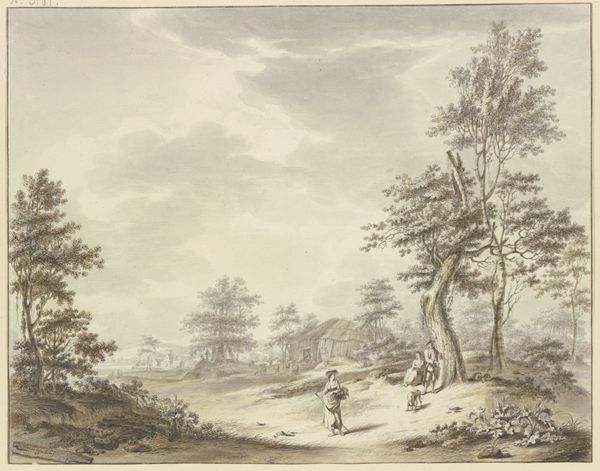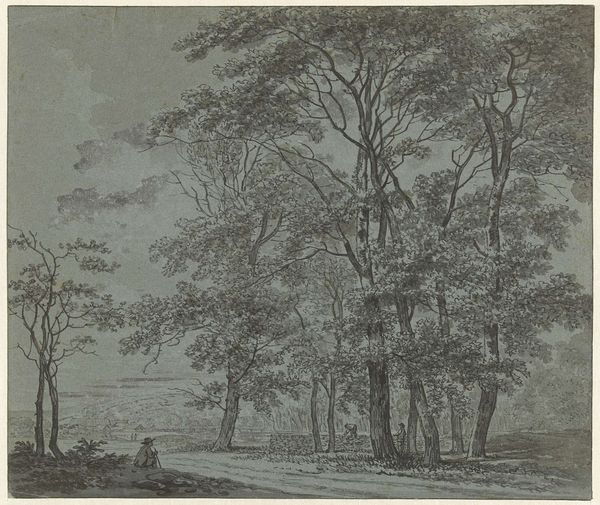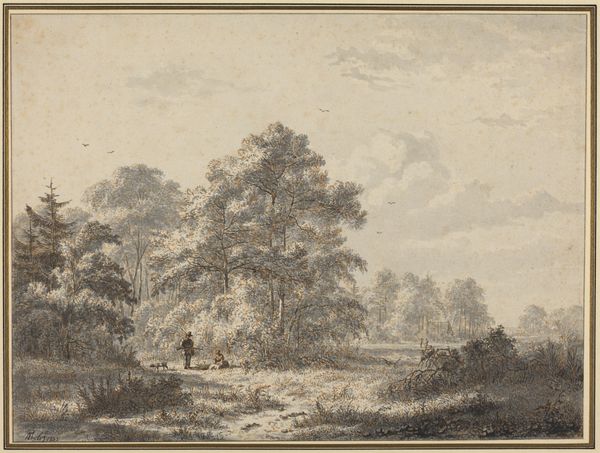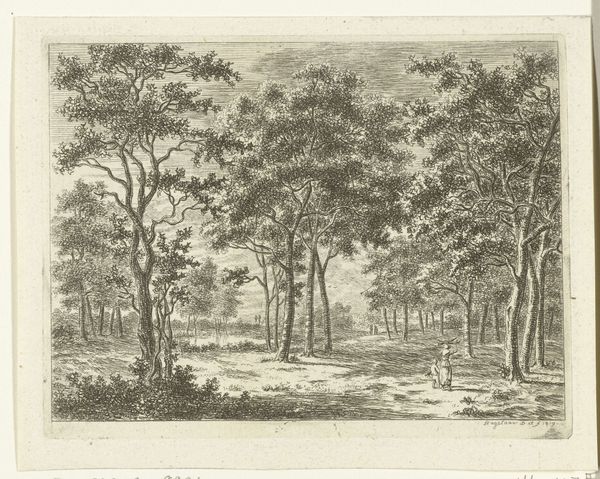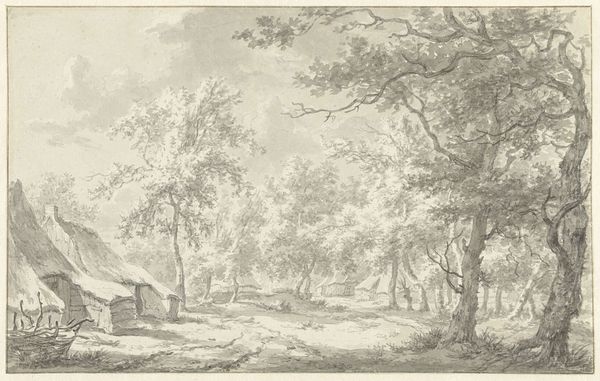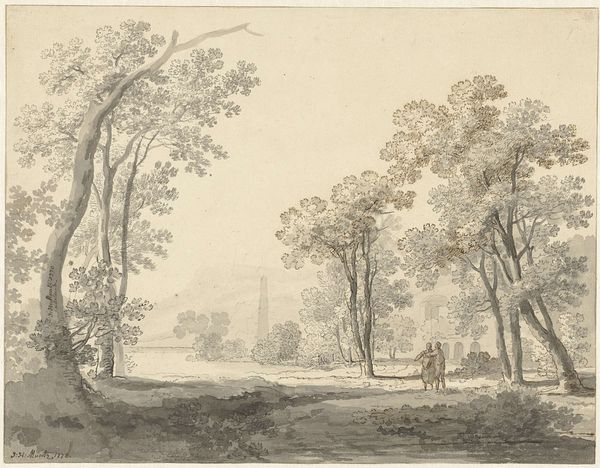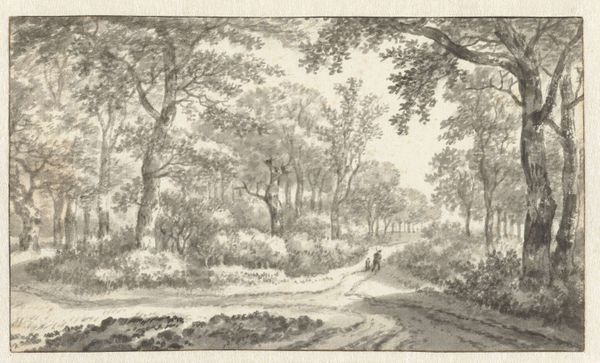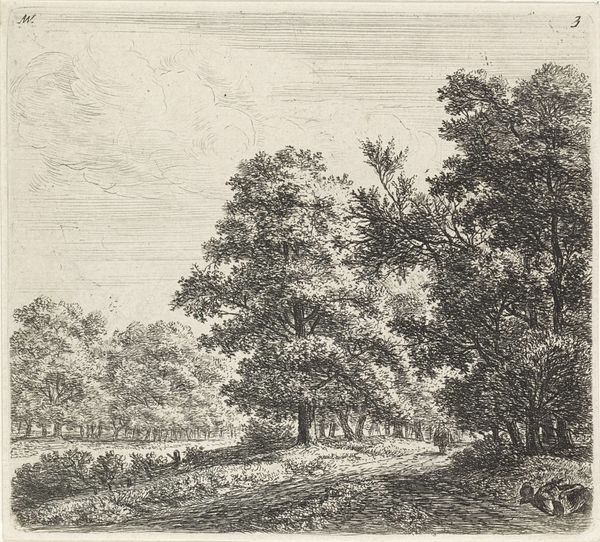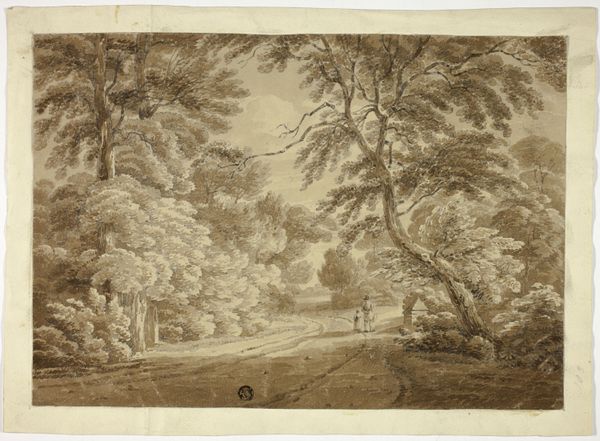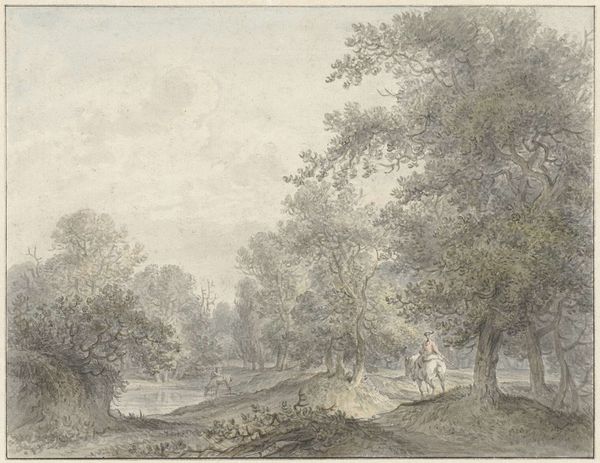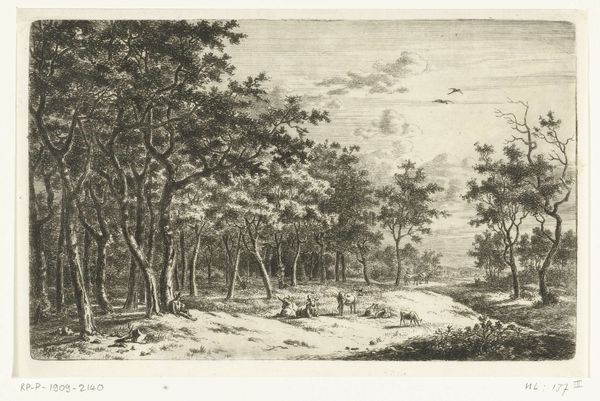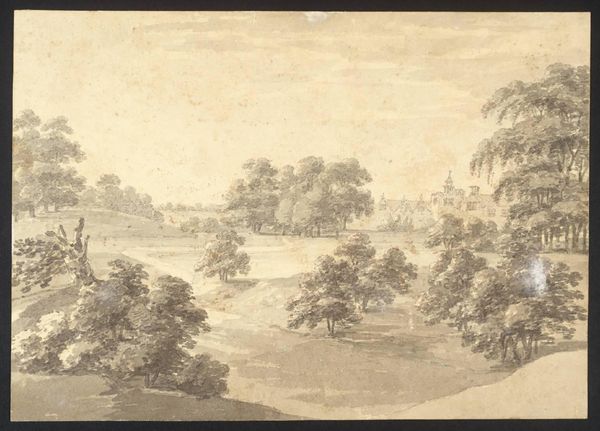
drawing, ink
#
drawing
#
dutch-golden-age
#
landscape
#
charcoal drawing
#
ink
#
coloured pencil
#
genre-painting
#
realism
Dimensions: height 132 mm, width 182 mm
Copyright: Rijks Museum: Open Domain
Editor: So this is Roelant Roghman's "Wooded Landscape with a Resting Traveller," made around 1657-1670. It’s a drawing, ink and colored pencil, and there's this sense of quiet observation about it. What strikes you most when you look at it? Curator: What stands out for me is the visible process of its creation. Roghman’s choice of ink and colored pencil isn't merely representational; it directly engages with the subject. Notice how he builds the landscape through layered marks. Editor: So you see the process of creation as key here? Curator: Absolutely. We're not just viewing a landscape, but witnessing labor and the material transformation of the physical world into art. Consider the accessibility of drawing materials in comparison to painting during the Dutch Golden Age. How might this have influenced who could produce and consume landscapes? Editor: That's interesting, the idea of accessibility through the medium itself. Were drawings more available to a wider public? Curator: Precisely. Ink and pencil allowed for a quicker, less expensive production, potentially broadening the market and democratizing access to art. Think about how that challenges traditional hierarchies of "high art." This connects to wider shifts in Dutch society at the time with emerging merchant class who also had a relationship to this landscape in ways the traditional elites maybe did not. Editor: I see! Looking at it that way really does change my understanding of the artwork, from just a pretty landscape to something embedded in its material reality and social context. Thank you. Curator: And for me, it highlights the importance of viewing art not just as an object of aesthetic pleasure but also as a product of specific social and material conditions.
Comments
No comments
Be the first to comment and join the conversation on the ultimate creative platform.
